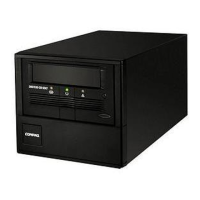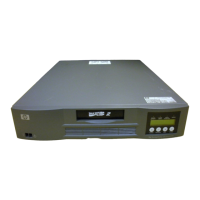Planning the MPX200 installation
Before installing the MPX200, it is important to define the requirements for iSCSI server connectivity
and MPX200 multi-function usage. You should consider present and future needs as they relate to the
following MPX200 configuration attributes:
• Simultaneous operation
You can configure the MPX200 chassis with a single blade or dual blades to run up to two oper-
ations simultaneously per blade as shown in Table 2 on page 27.
• iSCSI operation
• Dual-blade configurations are for high availability
• Total number of initiators
• Number of paths required per initiator
• Use of Internet Storage Name Service (iSNS)
• Use of iSCSI ports
• Load balancing
• 10-GbE initiators
Table 3 describes the MPX200 supported configuration maximums for ports, blades, and chassis.
Table 2 MPX200 blade configurations
Dual-blade chassis (blade1/blade2)Single blade chassis (blade1/blade2)
iSCSI/iSCSI
1
iSCSI/empty
iSCSI-FCIP/iSCSI-FCIP
1
iSCSI-FCIP/empty
iSCSI-DMS/iSCSI-DMS
1
iSCSI-DMS/empty
FCIP/FCIP
2
FCIP/empty
DMS/DMS
3
DMS/empty
iSCSI-DMS/iSCSI-FCIP
1
iSCSI-FCIP/iSCSI-DMS
1
1
Dual-blade iSCSI configurations are always configured for high availability.
2
Dual-blade FCIP configurations can be configured for separate operation or high availability.
3
Dual-blade DMS (data migration services) configurations are always configured for separate operation.
MPX200 Multifunction Router 27
